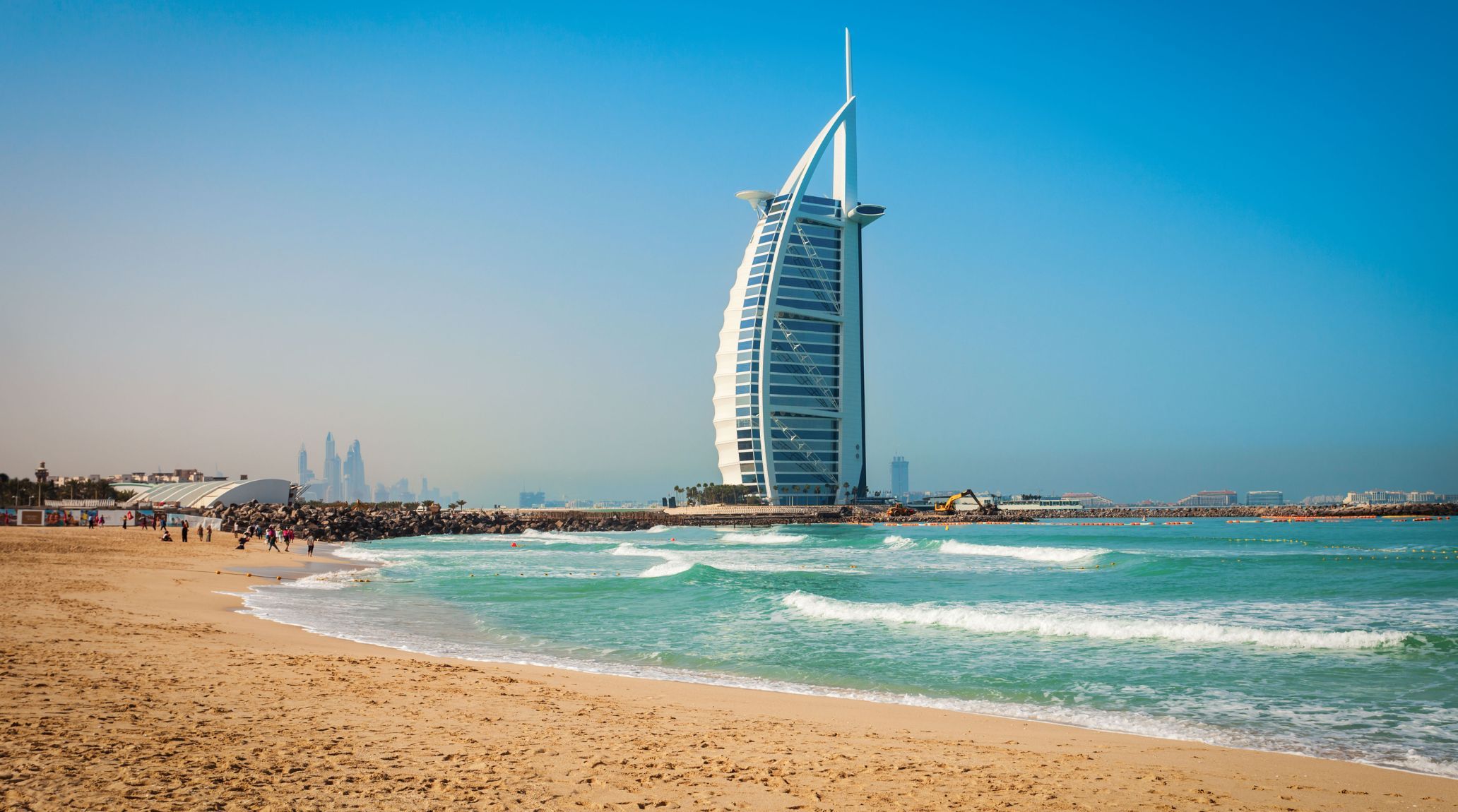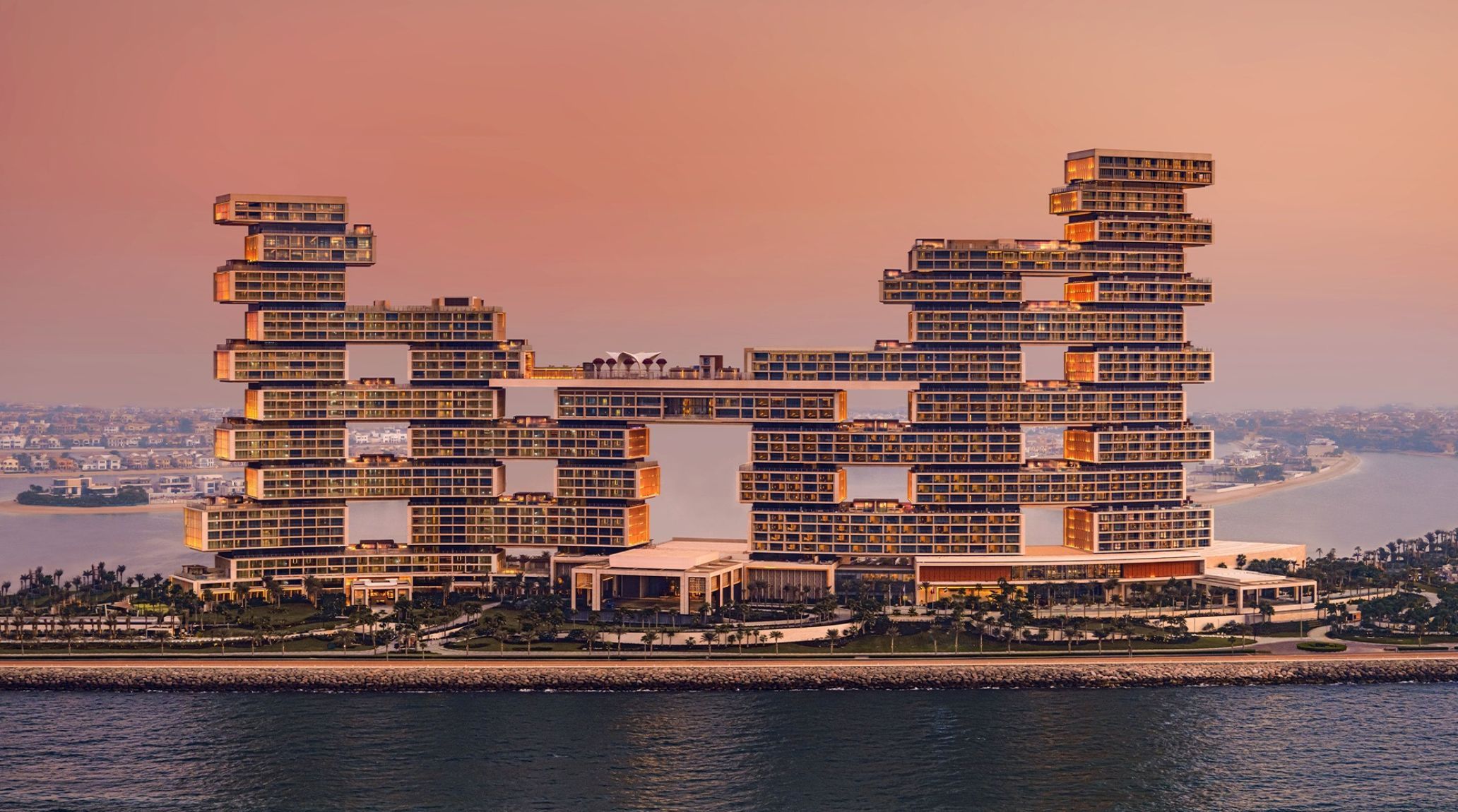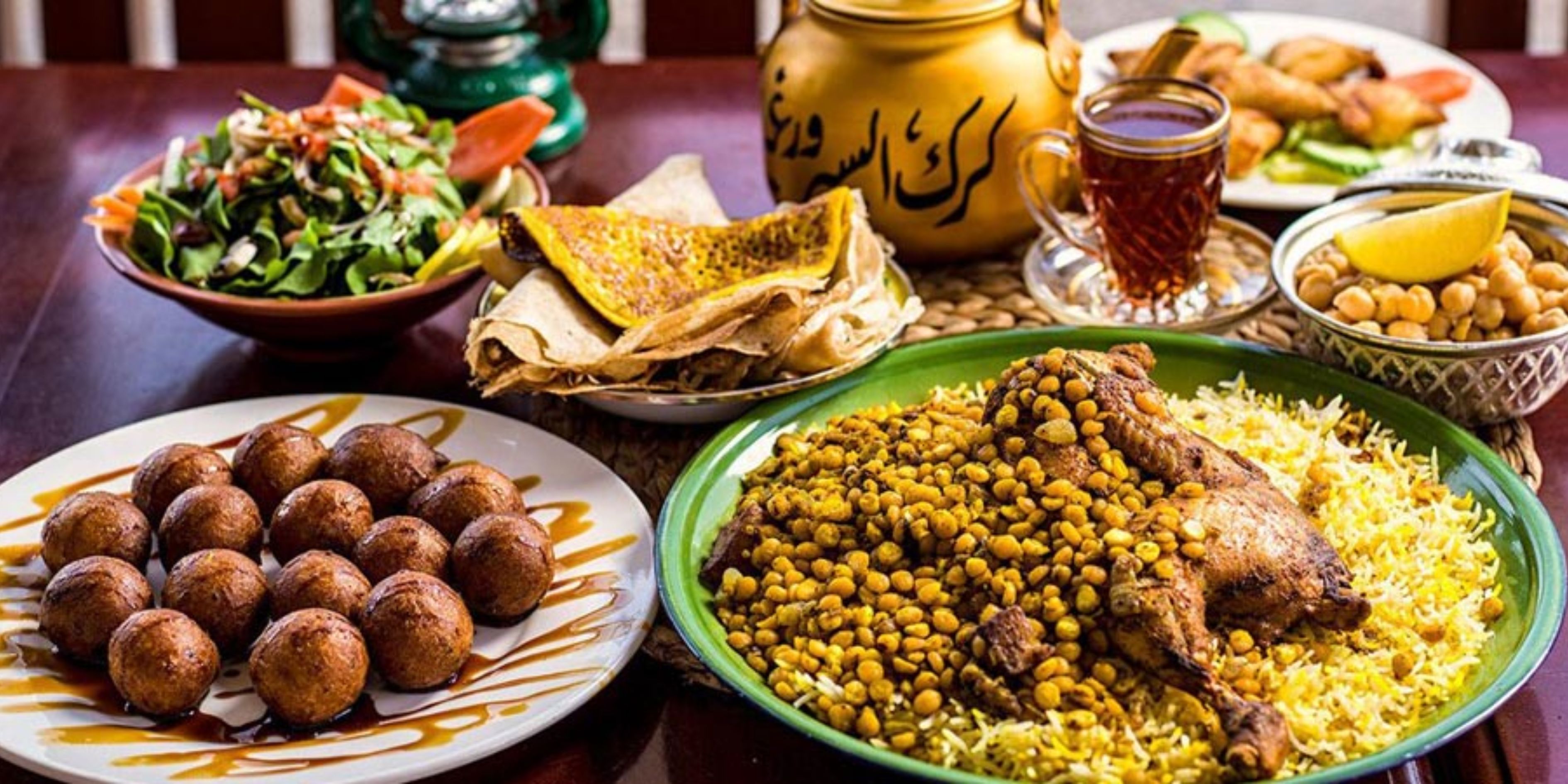
“
Traditional Emirati cuisine reflects the UAE’s rich heritage, blending Bedouin, maritime, and agricultural influences. From hearty rice dishes like machboos to the sweetness of luqaimat, each meal tells a story of history, hospitality, and local ingredients. Whether it's seafood from the Gulf or spiced meats from the desert, Emirati food offers a flavorful journey through culture and tradition that continues to thrive in modern-day kitchens.1
1
”
Machboos is a quintessential Emirati dish featuring rice, meat (like chicken or lamb), and spices such as cardamom and dried lime, reflecting the region's rich culinary heritage. 1
Harees is a traditional Emirati dish made by slow-cooking wheat and meat into a porridge-like consistency, often enjoyed during Ramadan and festive occasions. 2
Luqaimat are deep-fried dough balls, crispy outside and soft inside, drizzled with date syrup and sesame seeds, commonly served during Ramadan and special events. 3
Regag is a thin, crispy Emirati flatbread made from a simple batter, often served with cheese, eggs, or honey, and is a staple during Ramadan. 4
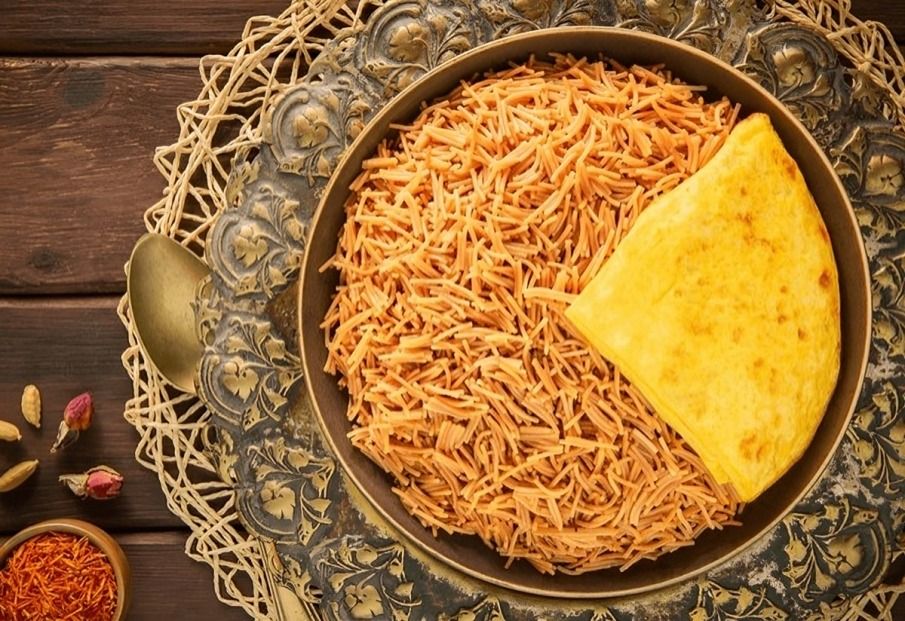
Balaleet combines sweetened vermicelli noodles flavored with cardamom and saffron, topped with a savory omelet, offering a unique sweet and savory breakfast experience.
Madrooba is a hearty Emirati dish made by cooking salted fish with spices and thick sauce, resulting in a comforting meal often enjoyed during Ramadan.5
Chebab are Emirati pancakes infused with saffron and cardamom, served with date syrup or cheese, commonly consumed during breakfast or suhoor.6
Aseeda is a traditional Emirati dessert made from flour, oil, and spices like cardamom and saffron, often served with date syrup or honey. 7
Saloona is a versatile Emirati stew made with meat and vegetables, seasoned with spices, reflecting the adaptability of Emirati cuisine to available ingredients. 8
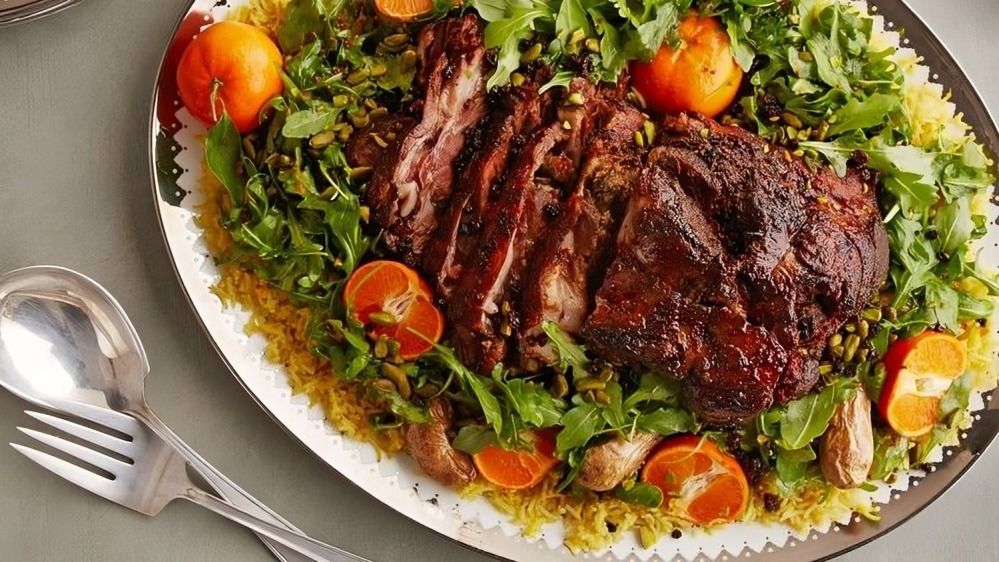
Ghuzi is a celebratory dish featuring whole roasted lamb served over spiced rice with nuts and raisins, symbolizing Emirati hospitality during special occasions.
Stuffed Camel is a traditional Emirati dish prepared for large gatherings, involving stuffing a whole camel with rice, eggs, fish, and spices, showcasing culinary grandeur.9
Khubz is a traditional Emirati bread baked in clay ovens, served with various dishes, and is a staple in Emirati households. 10
Mandi, though of Yemeni origin, is popular in the UAE, consisting of rice and meat cooked with spices, offering a smoky flavor from traditional tandoor cooking. 11
Camel Meat is consumed in Emirati cuisine, often prepared in stews or grilled, reflecting the historical significance of camels in Emirati culture. 12
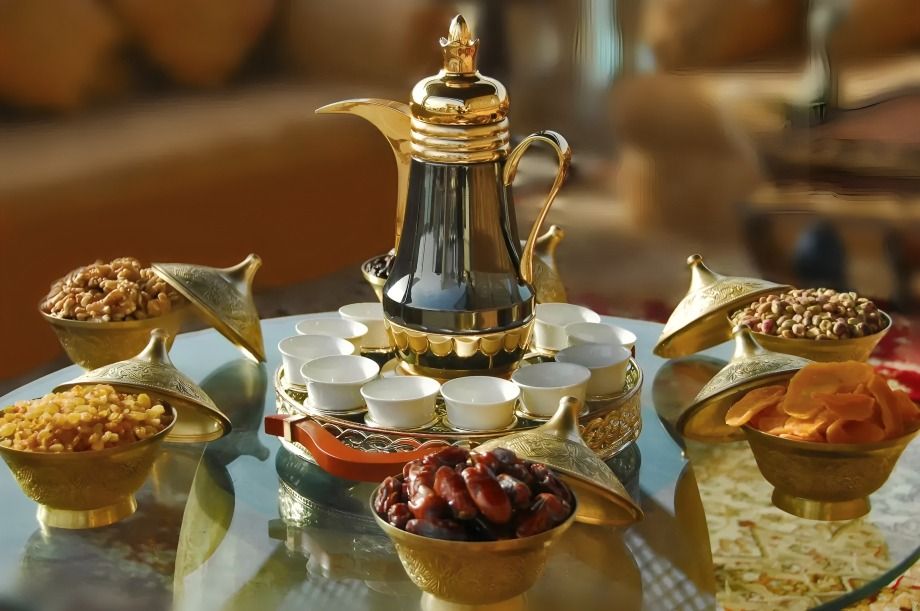
Arabic Coffee (Gahwa), flavored with cardamom and saffron, is a traditional Emirati beverage served to guests as a symbol of hospitality.
Camel Milk is a traditional beverage in the UAE, known for its nutritional value, and is also used in making desserts like ice cream. 13
Thareed is a traditional Emirati dish where meat and vegetables are served over thin bread soaked in flavorful broth, commonly enjoyed during Ramadan. 14
Khameer is a traditional Emirati bread made with yeast and flour, often sprinkled with sesame seeds, and served with cheese or honey. 15
Dates are integral to Emirati cuisine, consumed as snacks, in desserts, or as syrup (dibs), and are traditionally used to break fasts during Ramadan. 16
Mhammar is a traditional Emirati fish dish where fish is spiced and cooked whole, often served with sweet caramelized onions and yellow rice. 17
